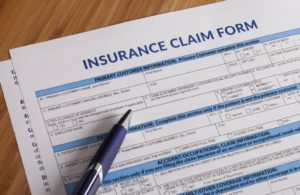By: Arnold Lakind
A number of publications on the web have examined the question of whether there is insurance coverage for loss of income and expenses paid as a consequence of the COVID-19 pandemic and Governor Murphy’s Executive Orders. Congress has encouraged insurance companies to pay these claims even in the absence of specific coverage but there is no mandate that they do so. The New Jersey Assembly has proposed a bill requiring payment, but that bill has stalled.
Several lawsuits have been brought, principally in Louisiana, and the outcome of those lawsuits is uncertain. This article addresses one theory of coverage, Civil Authority coverage, and highlights some relevant case law that should be considered.
Although we believe this claim is promising, this article is not intended to provide legal advice.
The Five Critical Policy Provisions
Every insurance policy is different. Therefore, it is important that you review your policy carefully to determine if there are any provisions that offer some basis for coverage.
You will want to look for five provisions. The first is a “Civil Authority endorsement”. The second is a “Business Income and Extra Expense” endorsement. The third is a virus or bacteria exclusion; the fourth is the notice provision. The last is the choice of law provision.
A virus or bacterial exclusion, if you have one, can take one of two forms. It may apply to every type of coverage in the policy or it may only exclude coverage for specified claims. Therefore, you need to review the exclusion and coverage provisions carefully.
The notice provision instructs you how to notify your insurance company of a possible claim. You must read this provision carefully and comply with its requirements. It is always prudent to concurrently notify your insurance broker or agent and ask them to also notify the carrier of the potential claim. Some policies have relatively short notice provisions. While generally a late notice will not foreclose coverage in the absence of prejudice, it is prudent to comply with your policy’s notice requirement and to maintain evidence of having done so.
Finally, laws differ from state to state. We focus generally on New Jersey law, with some citations to cases elsewhere. If you have a multi-site policy or are engaged in business in another state, you must undertake a choice of law analysis.
A discussion of Business Income and Extra Expense coverage is beyond the scope of this article.
With this background in mind, this memo turns to an examination of the most promising basis of coverage, that under the Civil Authority provision.
Civil Authority
The civil authority endorsement in some policies reads as follows:
“When the Declarations show that you have coverage for Business Income and Extra Expense, you may extend that insurance to apply to the actual loss of Business Income you sustain and reasonable and necessary Extra Expense you incur caused by (1) action of civil authority that prohibits access to the described premises. The civil authority action must be due to (2) direct physical loss of or damage to property at locations, other than described premises, (3) caused by or resulting from a Covered Cause of Loss. (The numbers in parentheses do not appear in the policy provision, but are added for ease of reference).”
A significant drawback of this coverage is that many policies limit the duration of payments under this provision, sometimes as short as four weeks. See discussion in Abner, Herrman & Brock, Inc. v. Great N. Ins. Co., 308 F. Supp. 2d 331, 336 (S.D.N.Y. 2004).
On the other hand, this provision is broadly written insofar as it covers losses attributable to the closure action, not just those caused by any physical damage.
Moreover, it would appear to be easier to craft a claim that qualifies for this coverage than for coverage under a Business Income and Extra Expense provision. That being said, any notice should include claims under all potentially applicable provisions.
Action of Civil Authority that Prohibits Access
Governor Murphy’s Executive Order 107 reads in part as follows:
“The brick‑and‑mortar premises of all non‑essential retail businesses must close to the public as long as this Order remains in effect.”
The Order does not by its terms “prohibit access” to any specific described premises.
- Is access prohibited?
Courts elsewhere have ruled that a government order declaring an emergency, imposing a curfew, and requiring certain businesses to close will satisfy the prohibition of access requirement. Southlanes Bowl v. Lumbermen’s Mut. Ins. Co., 46 Mich. App. 758, 760, 208 N.W.2d 569, 570 (Mich. App. 1973); Sloan v. Phx. of Hartford Ins. Co., 207 N.W.2d 434, 436‑37 (Mich. Ct. App. 1973). Likewise, an evacuation order will satisfy this requirement. Assurance Co. of Am. v. BBB Serv. Co., 593 S.E.2d 7, 8 (Ga. Ct. App. 2003). Governor Murphy=s order would likely be construed to prohibit access.
- Is an order required?
The Civil Authority provision above refers to an “action by a civil authority.” Other policies require an order. Coverage is more generous where only an “action” is required. See Zurich American Insurance Co. v. ABM Industries, Inc., 397 F.3d 158, 161, 171 (2d Cir. 2005); Herrman & Brock, Inc. v. Great N. Ins. Co., 308 F. Supp. 2d 331, 335 (S.D.N.Y. 2004). A discussion of this distinction appears in Penton Media, Inc. v. Affiliated FM Ins. Co., No. 1:03 CV 2111, 2006 U.S. Dist. LEXIS 64387, at *23 (N.D. Ohio Aug. 28, 2006).
It would appear that Governor Murphy’s Order is sufficient to satisfy the requirement that it “prohibit access.”
Direct Physical Loss
- Off Premise Losses Suffice
Unlike the typical income interruption endorsement, this coverage does not require physical damage to property at the insured premises. Therefore, an insured is relieved of the need to prove a direct physical loss on the insured premises. Sloan v. Phx. of Hartford Ins. Co., 207 N.W.2d at 436‑37:
“In short, a plain reading of the policy would lead the ordinary person of common understanding to believe that, irrespective of any physical damage to the insured property, coverage was provided and benefits were payable when, as a result of one of the perils insured against, access to the insured premises was prohibited by order of civil authority, and we so hold.”
See also Southlanes Bowl v. Lumbermen’s Mut. Ins. Co., 208 N.W.2d at 570 (“[W]here the insured businesses were closed by order of a civil authority, physical damage to the insured premises was not a prerequisite to the insurer’s obligation to reimburse the insured for the net losses resulting therefrom.”)
While both of these cases were decided under Michigan law, Michigan employs the same principles as New Jersey courts do when analyzing insurance coverage disputes. A New Jersey Court would almost certainly reach the same conclusion. This is important because, were an insured required to prove that a physical loss occurred on the premises, it would seem that he or she would need to sample the premises or, perhaps, use a scientific model to demonstrate that the premises were contaminated with virus molecules.
- The Insured Need Not Prove Damage to Tangible Property
Must there be physical damage to tangible property? In some states the answer is yes, but not in New Jersey. Customized Distribution Servs. v. Zurich Ins. Co., 373 N.J. Super. 480 (App. Div. 2004).
In Customized, a warehousing company misrotated Campbell’s soup inventory. As a result Campbell’s was unable to sell a large number of the stored cans because, although they were edible, they were beyond their labeled sell-by date. Customized paid Campbell’s and sued its insurer, Zurich, to recover for the loss. Zurich argued that because the soup was not itself damaged, there was no “direct physical loss.”
The trial court agreed, Customized appealed, and the Appellate Division reversed:
In our view, the trial court erred in finding that the misrotation was not a direct physical loss, or a risk of such loss, and in the alternative we further conclude that the policy language as to such coverage was ambiguous in the context of this dispute and should be construed against Zurich and in favor of the insured. First, we note that, for coverage to apply, it was not necessary that the product’s material or chemical composition be altered.
*** In neither of these instances does the term “physical” require or contemplate that the material composition of the product itself be changed or affected.
Id. at 488.
A later decision of the Appellate Division, involving an electrical grid failure, reached the same conclusion. Wakefern Food Corp. v. Liberty Mut. Fire Ins. Co., 406 N.J. Super. 524, 540 (App. Div. 2009):
We conclude that the undefined term “physical damage” was ambiguous and that the trial court construed the term too narrowly, in a manner favoring the insurer and inconsistent with the reasonable expectations of the insured. In the context of this case, the electrical grid was “physically damaged” because, due to a physical incident or series of incidents, the grid and its component generators and transmission lines were physically incapable of performing their essential function of providing electricity. * * * However, we do not rest our decision on that evidence. Rather, we look at the larger picture concerning the loss of function of the system as a whole.
The Court elaborated on the ambiguity of the word “physical”:
Since ‘physical’ can mean more than material alteration or damage, it was incumbent on the insurer to clearly and specifically rule out coverage in the circumstances where it was not to be provided, something that did not occur here.
Id. at 541-42.
Also applying New Jersey law, the United States District Court, in Gregory Packaging, Inc. v. Travelers Prop. Cas. Co. of Am., No. 2:12‑cv‑04418 (WHW) (CLW), 2014 U.S. Dist. LEXIS 165232, at *13 (D.N.J. Nov. 25, 2014), ruled that
While structural alteration provides the most obvious sign of physical damage, both New Jersey courts and the Third Circuit have also found that property can sustain physical loss or damage without experiencing structural alteration.
Courts elsewhere have reached a similar conclusion. Motorists Mut. Ins. Co. v. Hardinger, 131 F. App’x 823, 824 (3d Cir. 2005) (bacterial contamination of a water supply); Essex v. BloomSouth Flooring Corp., 562 F.3d 399, 406 (1st Cir. 2009) (an unpleasant odor rendering property unusable constituted physical injury to the property).
Covered Cause of Loss
The third and last requirement is that the civil authority=s action must be caused by or result from a “covered cause of loss.” The satisfaction of these criteria is dependent upon the policy language.
Some policies describe a “covered cause of loss” as a risk of physical damage or injury. If there is physical damage or injury, it could be assumed that this definition is satisfied.
Courts have generally broadly found coverage applying this language. See e.g. Doheny W. Homeowners’ Assoc. v. Am. Guarantee & Liab. Ins. Co., 60 Cal. App. 4th 400, 405 n.4 (1997) (“We must reject [the insurer’s] argument that ‘risk’ means ‘perils’ or causes of loss, although the word can have that technical meaning. ‘Risk’ is commonly defined to mean ‘the chance of injury, damage, or loss . . .”) and 401 Fourth St., Inc. v. Inv’rs Ins. Grp., 583 Pa. 445, 456 (2005) (use of the word Arisk@ is intended to extend coverage, not limit it).
In the absence of a virus or other applicable exclusion, there is a promising case for coverage in New Jersey under the Civil Authority provision of some policies.
Arnold Lakind is a litigation attorney and partner in the Lawrenceville, NJ law firm of Szaferman, Lakind. He can be reached at 609-275-0400 or via email at alakind@szaferman.com.






